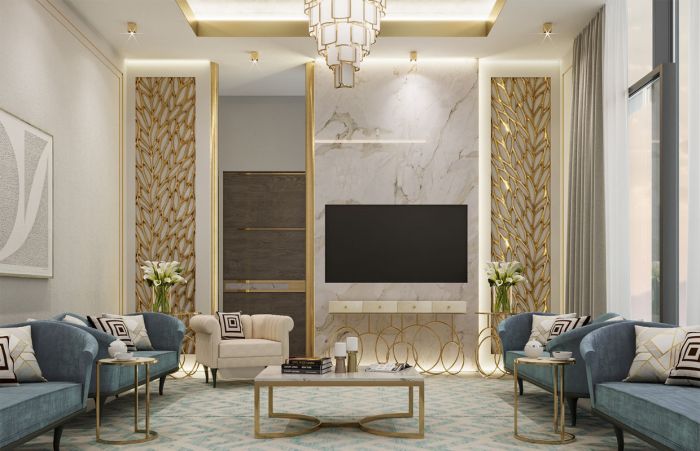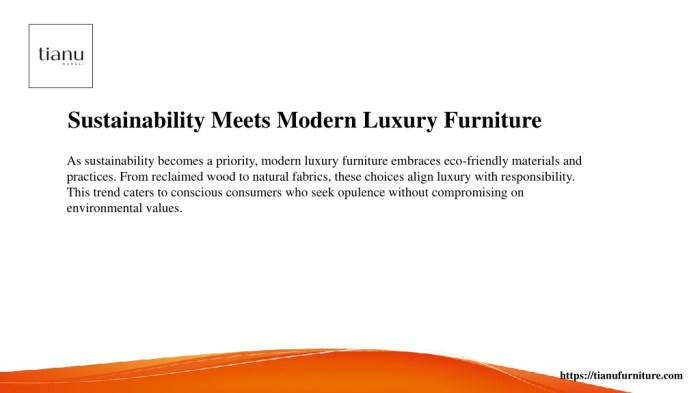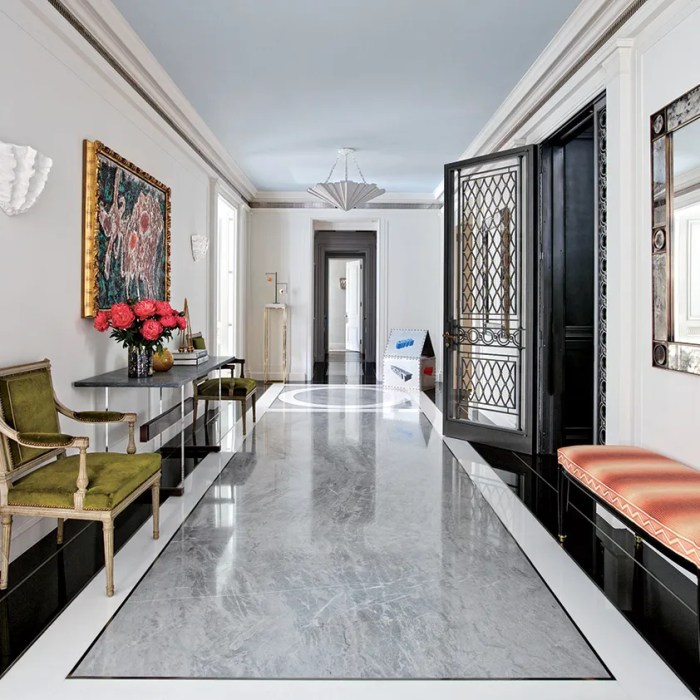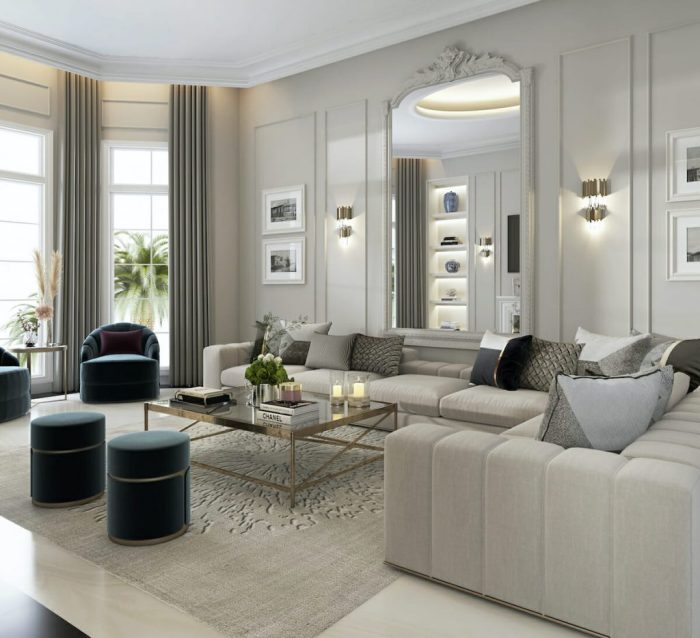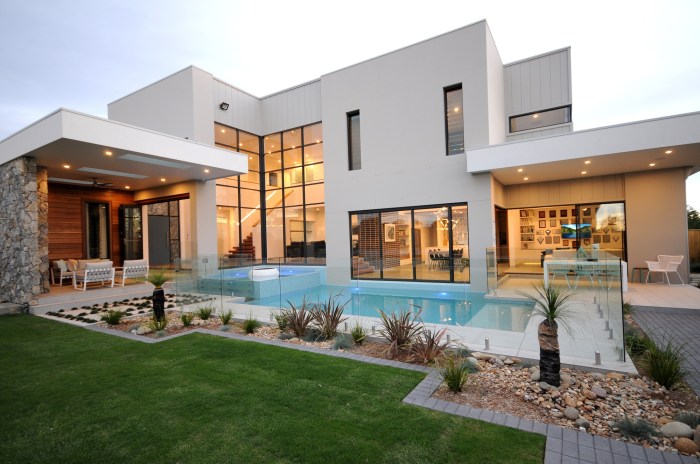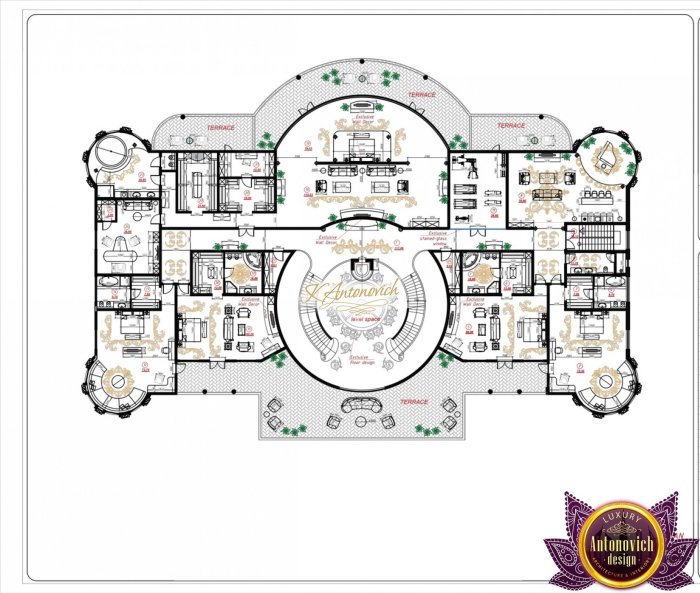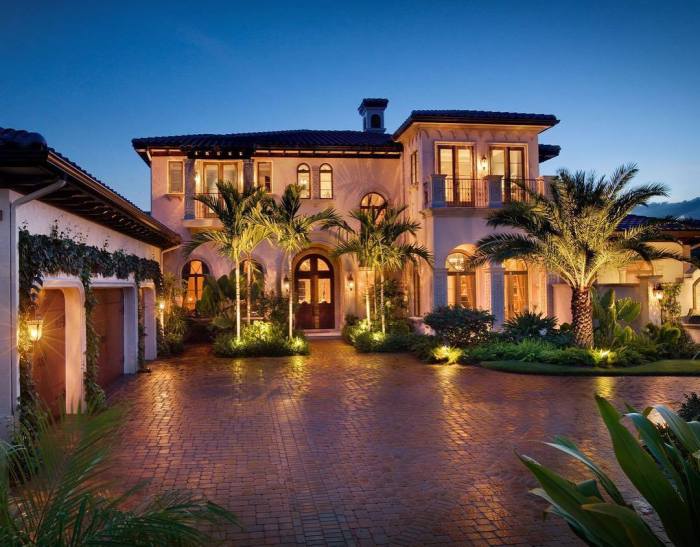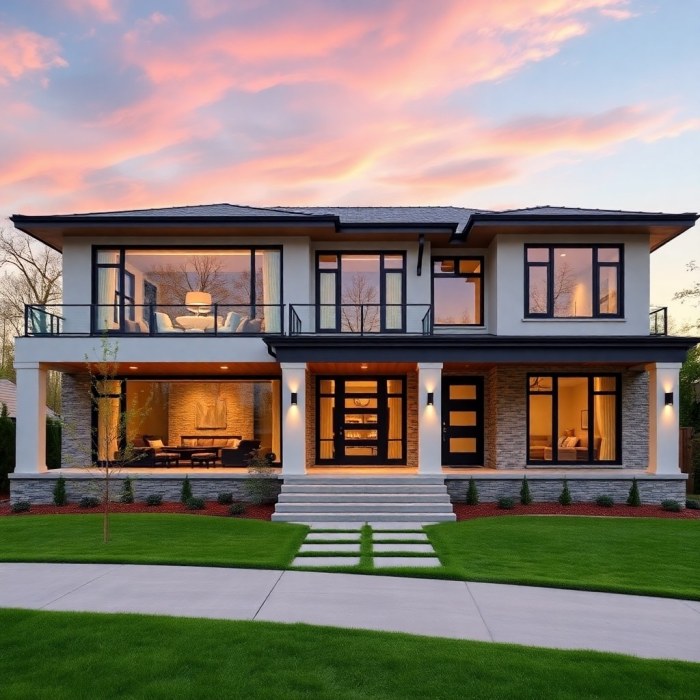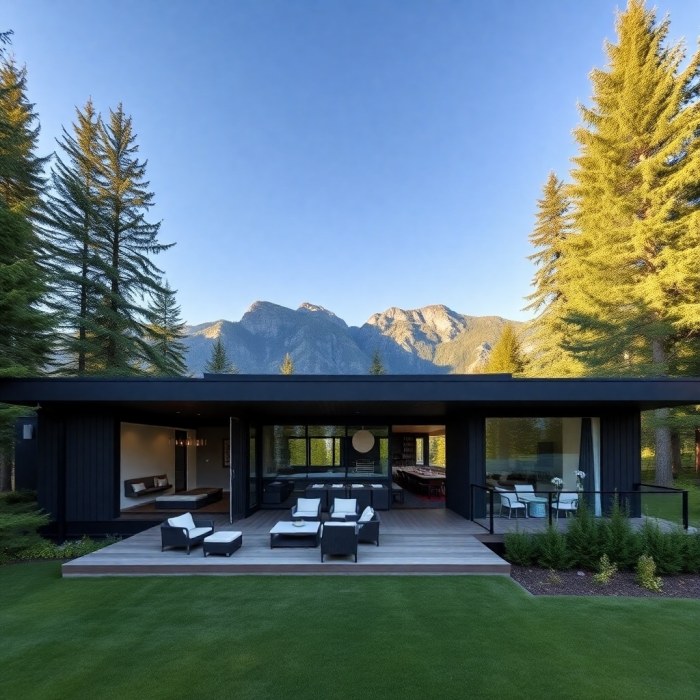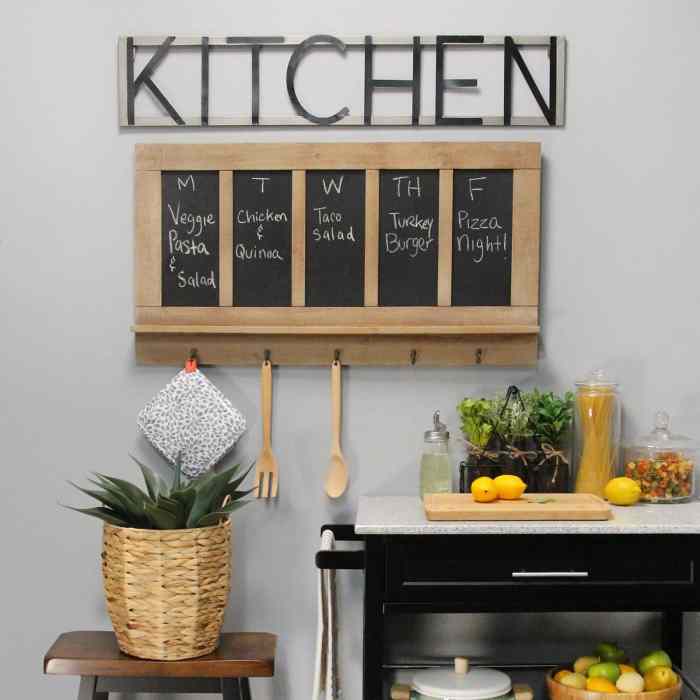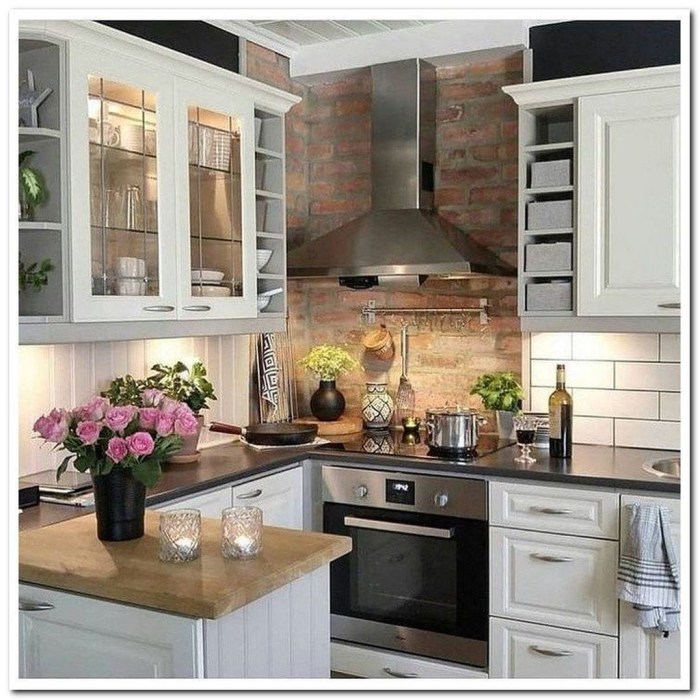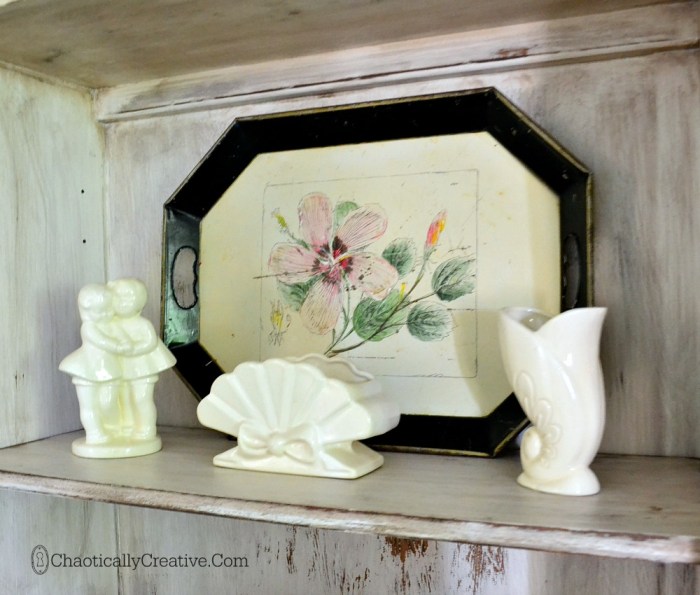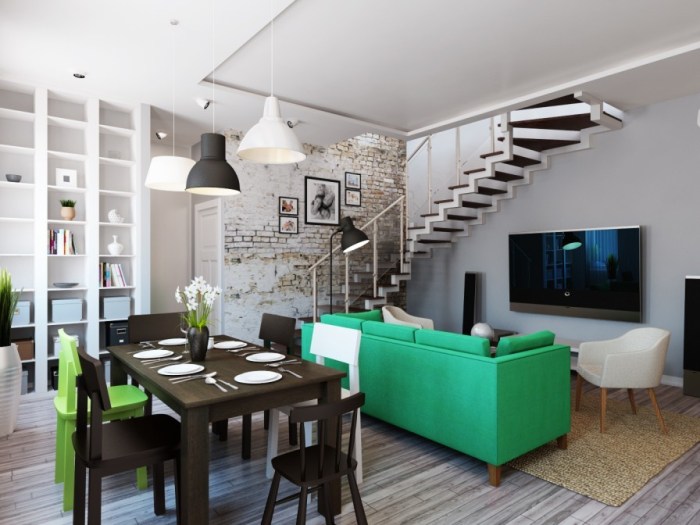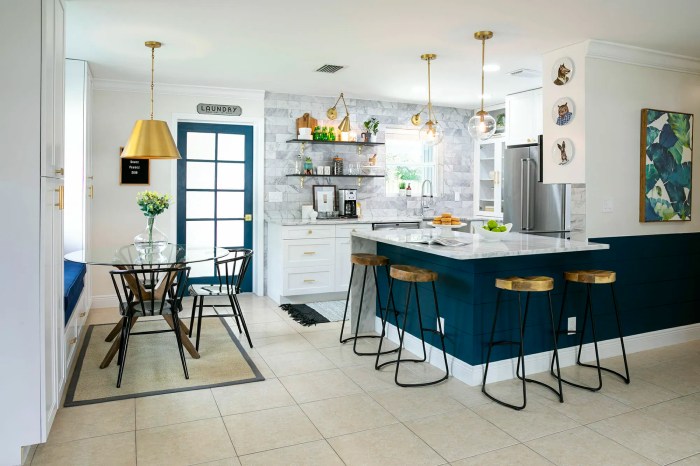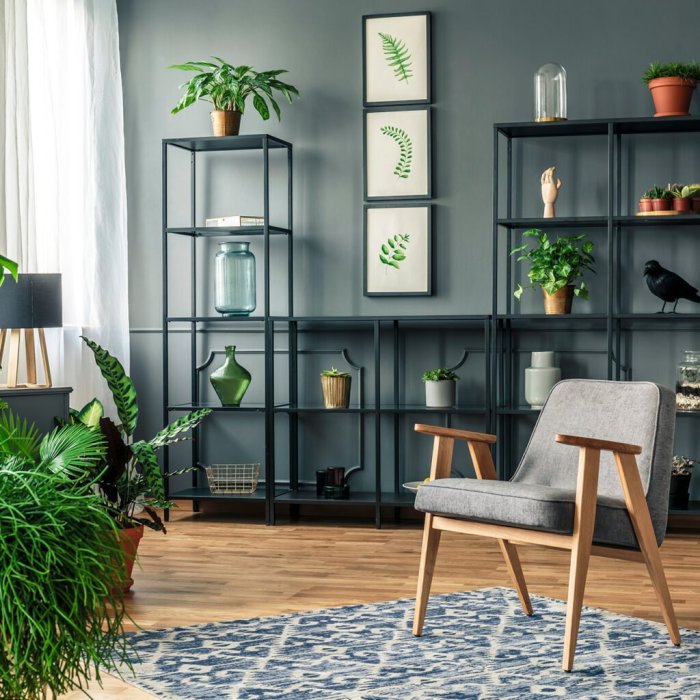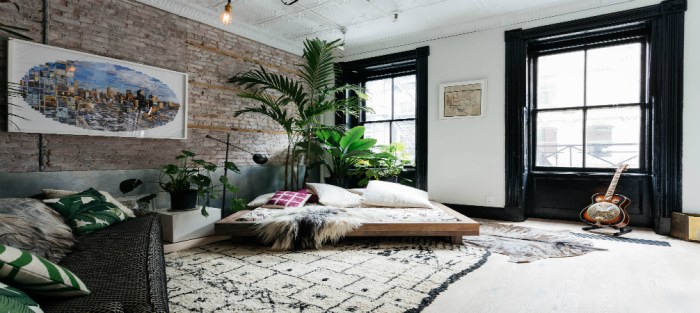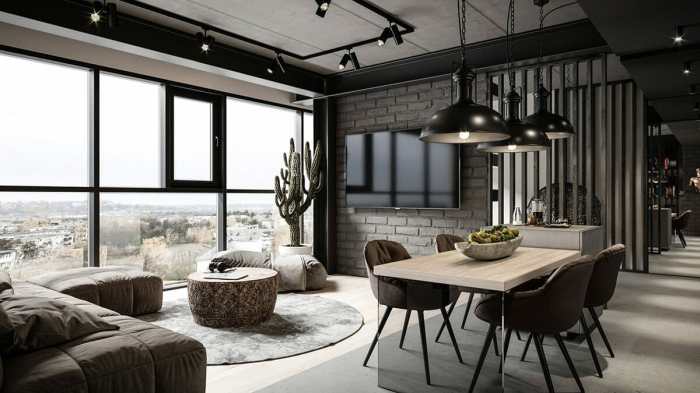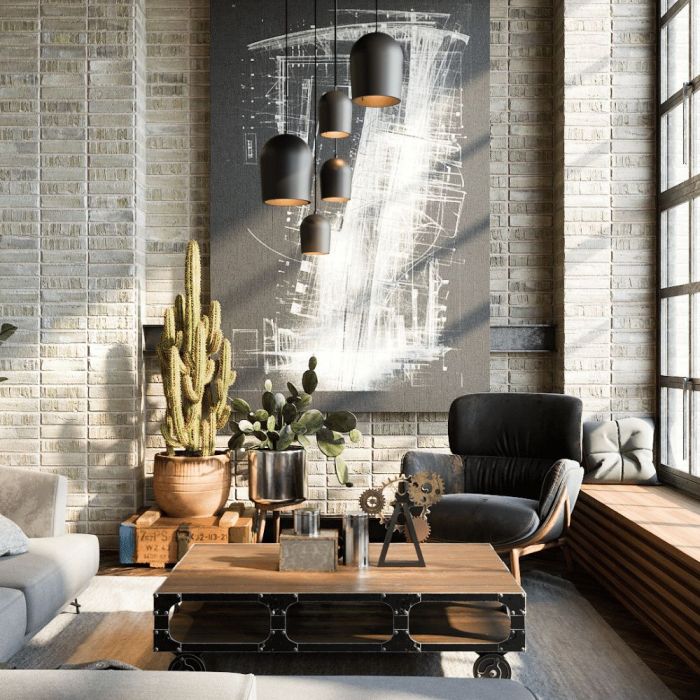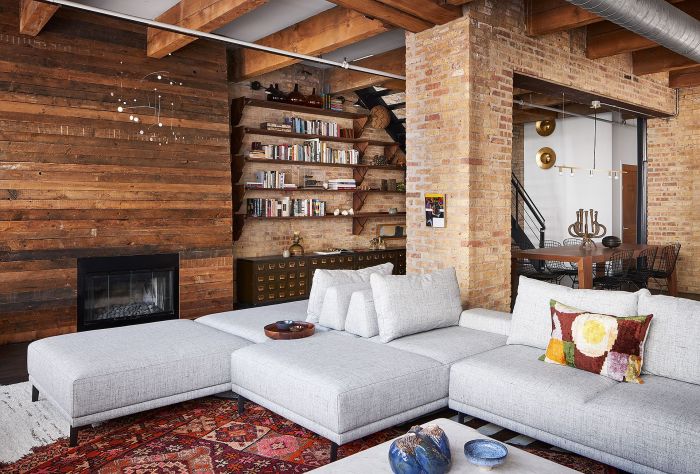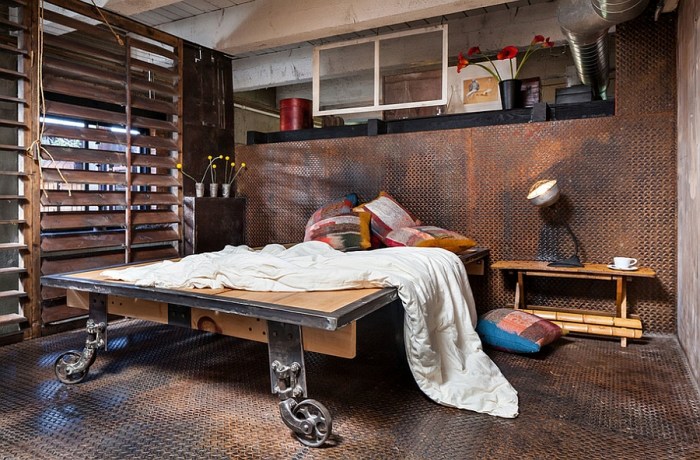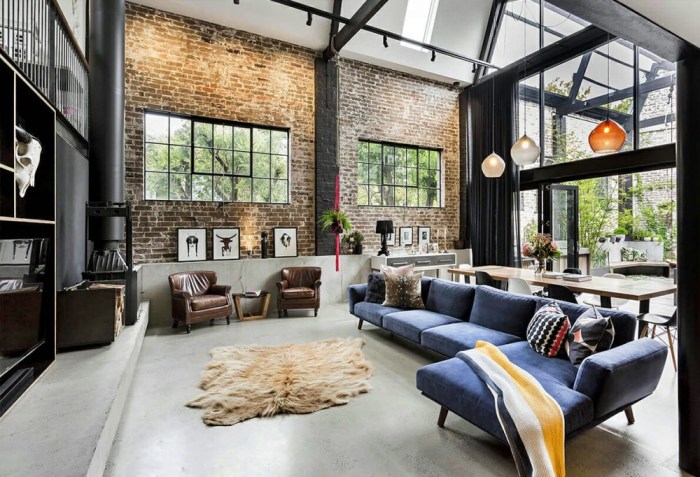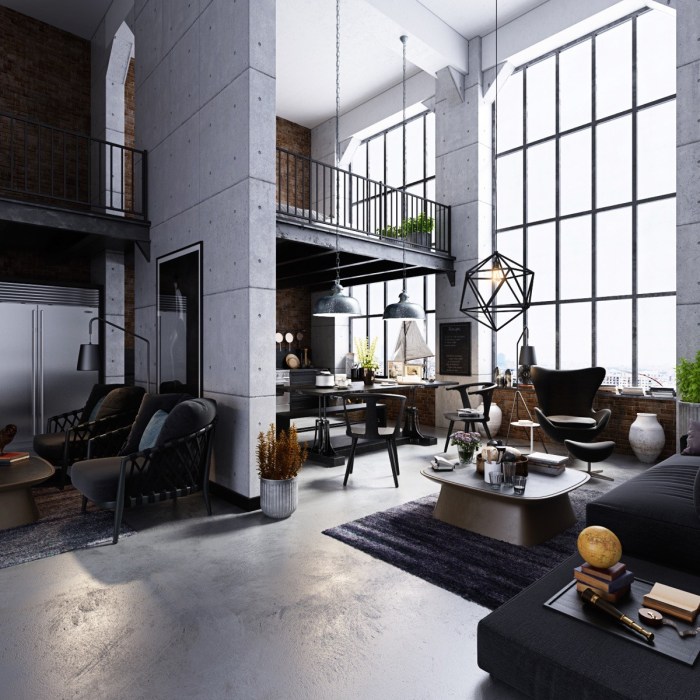Natural stone, a testament to Earth’s artistry, transcends mere building material; it becomes a defining element in luxury home decor. From the cool elegance of marble to the fiery drama of granite, each stone possesses a unique character, capable of transforming a house into a haven of sophisticated style. This exploration delves into the world of high-end natural stone, examining its sourcing, design applications, and enduring value, ultimately revealing how it elevates a home beyond the ordinary.
We’ll journey through the ethical sourcing of these magnificent materials, exploring sustainable practices and the environmental impact of extraction. We’ll examine how various natural stones lend themselves to diverse architectural styles, from the clean lines of minimalism to the opulent grandeur of traditional designs. Furthermore, we’ll delve into the practical aspects, including maintenance, cost considerations, and the long-term investment value inherent in choosing natural stone for your luxury home.
Defining Luxury in Natural Stone Home Decor
Luxury in natural stone home decor transcends mere material cost; it’s a confluence of material quality, skilled craftsmanship, and the creation of an atmosphere of refined elegance and enduring beauty. The inherent properties of the stone itself – its texture, veining, and color – contribute significantly to its perceived luxury, but equally important is the artistry involved in its selection, preparation, and installation.
High-end natural stone materials, prized for their rarity, durability, and aesthetic appeal, are fundamental to achieving luxury in home decor. These materials are often sourced from specific quarries known for producing exceptional specimens. The process of selecting and preparing these stones involves meticulous examination and careful cutting to maximize their inherent beauty and minimize waste. The final installation demands expertise to ensure a flawless finish that enhances the overall design.
High-End Natural Stone Materials in Luxury Homes
Several natural stones consistently define luxury in residential settings. Marble, particularly varieties like Calacatta and Carrara from Italy, renowned for their dramatic veining and pristine white backgrounds, exemplify the pinnacle of luxury. Onyx, with its translucent quality and captivating internal light diffusion, adds a dramatic and opulent touch. Granite, chosen for its exceptional hardness and resistance to wear, often features in high-traffic areas, showcasing unique color variations and patterns.
Other luxury choices include quartzite, known for its exceptional durability and stunning range of colors, and limestone, appreciated for its warm tones and aged appearance.
Craftsmanship Techniques Elevating Natural Stone to Luxury Status
The transformation of raw natural stone into a luxurious interior feature relies heavily on skilled craftsmanship. Techniques like honed finishing create a smooth, matte surface, enhancing the stone’s natural beauty. Polished finishes bring out the stone’s luster and brilliance, while techniques such as bookmatching (mirroring slabs to create symmetrical patterns) or water-jet cutting (for intricate designs) add an element of artistic precision.
Highly skilled artisans, often specializing in specific stone types, are crucial to executing these techniques flawlessly, ensuring the finished product reflects the highest standards of quality and aesthetics.
Natural Stone in Different Architectural Styles
The use of natural stone varies significantly across architectural styles, reflecting both the material’s inherent properties and the stylistic preferences of each era. In classic neoclassical designs, marble is often employed extensively, creating a sense of grandeur and timeless elegance. Modern minimalist designs might favor honed or brushed finishes on granite or quartzite, emphasizing clean lines and a neutral palette.
Rustic or Mediterranean styles may incorporate limestone or travertine, evoking a sense of warmth and age. The choice of stone and its treatment directly reflects the overall aesthetic intent of the architectural style.
Hypothetical Luxury Bathroom Featuring Natural Stone
Imagine a spa-like bathroom where Calacatta Gold marble forms the backdrop, its warm, honey-colored veining adding a touch of opulence to the walls. The flooring is composed of large, polished slabs of dark grey granite, providing a striking contrast and durable surface. The vanity countertop is crafted from a single, meticulously selected slab of onyx, its translucent quality illuminated by strategically placed under-counter lighting.
A freestanding bathtub, carved from a single block of white Carrara marble, sits majestically in the center, its smooth, cool surface inviting relaxation. Finally, the shower enclosure features a mosaic of smaller, contrasting marble tiles, creating a textured and visually interesting focal point. This carefully considered selection and placement of natural stones creates a harmonious and luxurious environment.
Sourcing and Sustainability of Natural Stone
The luxury home décor industry’s reliance on natural stone presents a complex interplay between aesthetic appeal and environmental responsibility. Ethical sourcing and sustainable practices are no longer optional considerations but crucial aspects of responsible luxury. Understanding the journey of natural stone from quarry to finished product is paramount to making informed choices.
Ethical sourcing of natural stone prioritizes fair labor practices, environmental protection, and community well-being in the regions where extraction occurs. This involves rigorous verification of supply chains, ensuring adherence to local regulations, and supporting initiatives that promote economic development within these communities. Ignoring these factors can lead to exploitation of workers, environmental degradation, and social unrest, undermining the very notion of sustainable luxury.
Environmental Impact of Natural Stone Extraction Methods
Different extraction methods significantly influence the environmental footprint of natural stone. Quarrying, the most common method, involves blasting and heavy machinery, leading to habitat destruction, air and water pollution, and increased carbon emissions. The scale of these impacts varies depending on the stone type, quarry location, and employed techniques. For instance, open-pit mining, while efficient for large-scale extraction, has a substantially larger environmental impact compared to more selective methods.
The transportation of extracted stone, often over long distances, further contributes to carbon emissions.
Sustainable Practices in the Natural Stone Industry
Several initiatives aim to mitigate the environmental impact of natural stone extraction and processing. These include the implementation of stricter environmental regulations, the adoption of cleaner extraction technologies, and the promotion of responsible sourcing certifications. Companies are increasingly investing in renewable energy sources to power their operations, reducing their carbon footprint. Recycling and reusing waste materials from processing plants are also gaining traction, minimizing landfill waste.
Furthermore, some quarries are actively involved in habitat restoration projects, attempting to offset the environmental damage caused by extraction. The shift towards more sustainable practices is driven by both consumer demand and a growing awareness of the industry’s environmental responsibilities.
Environmental Comparison of Popular Natural Stones
The following table compares the environmental impact of three popular natural stones, highlighting the variability in their sustainability profiles. It’s crucial to note that these values are estimates and can vary based on specific quarries, extraction methods, and processing techniques. Further research into the specific sourcing and production methods of a given product is always recommended for a complete understanding of its environmental impact.
| Stone Type | Extraction Method | Carbon Footprint (Approximate) | Sustainability Initiatives |
|---|---|---|---|
| Marble | Typically open-pit mining; sometimes underground | High; significant energy consumption and CO2 emissions during extraction and processing | Some producers are adopting energy-efficient technologies and implementing waste reduction programs; certifications like LEED may apply to finished products |
| Granite | Primarily open-pit mining | Moderate to High; depends heavily on transportation distances and processing methods | Similar to marble, initiatives focus on energy efficiency and waste management; responsible sourcing certifications are increasingly important |
| Limestone | Open-pit and underground mining; varies significantly | Moderate; generally lower than marble and granite, but varies widely | Opportunities for carbon sequestration through responsible land management post-extraction; some producers focus on local sourcing to reduce transportation impacts |
Design Applications of Natural Stone in Luxury Homes
The inherent beauty and durability of natural stone make it a highly sought-after material in luxury home design. Its versatility allows for a wide range of applications, from subtle accents to dramatic focal points, significantly impacting the overall aesthetic and ambiance of a space. Understanding the diverse properties of different stone types is crucial for successful integration into a luxury home environment.
The use of natural stone in luxury home design transcends mere functionality; it’s a statement of refined taste and enduring elegance. Its tactile qualities, unique veining, and inherent color variations offer a level of sophistication unmatched by synthetic alternatives. This section will explore key design trends, specific applications, and the ability of natural stone to evoke distinct moods within a home’s interior.
Key Design Trends Incorporating Natural Stone
Current trends favor the use of natural stone in large format tiles and slabs, maximizing the visual impact of the material’s natural patterns. Large slabs of marble or quartzite are increasingly popular for kitchen countertops and bathroom vanities, creating a sense of spaciousness and understated luxury. Another prominent trend is the use of natural stone in unexpected ways, such as incorporating it into fireplaces, accent walls, or even custom furniture pieces.
The juxtaposition of different stone types, textures, and colors adds visual interest and depth. For example, the cool tones of a Calacatta marble countertop might be complemented by the warm hues of a travertine fireplace surround.
Natural Stone Applications in Luxury Homes
Natural stone’s versatility shines through its diverse applications throughout a luxury home.
The following table showcases the diverse applications of natural stone:
| Application | Suitable Stone Types | Aesthetic Impact |
|---|---|---|
| Flooring | Marble, Limestone, Granite, Travertine | Creates a sense of grandeur and sophistication; marble offers a classic elegance, while limestone provides a more rustic charm. |
| Countertops | Marble, Quartzite, Granite, Soapstone | Adds a touch of luxury and durability to kitchens and bathrooms; marble’s veining adds visual interest, while quartzite offers exceptional resistance to scratches and stains. |
| Wall Cladding | Slate, Granite, Marble, Onyx | Creates a dramatic focal point; onyx’s translucency can be highlighted with backlighting, while slate offers a more rugged, textural appeal. |
| Fireplaces | Marble, Limestone, Granite, Sandstone | Adds warmth and sophistication; the natural textures and colors of the stone complement the ambiance of a fireplace. |
Creating Different Moods and Ambiances with Natural Stone
The inherent properties of different natural stone types allow designers to manipulate the atmosphere of a space. For example, the cool, calming tones of white Carrara marble create a serene ambiance in a bathroom, while the rich, warm tones of a brown granite countertop can add a sense of rustic elegance to a kitchen. The use of backlighting with translucent stones like onyx can add a dramatic and luxurious touch.
Conversely, a matte finish on a stone like slate can create a more understated and modern feel. Careful consideration of color, texture, and finish is key to achieving the desired mood.
Living Room Design Featuring Natural Stone as a Focal Point
Imagine a living room dominated by a stunning feature wall clad in large slabs of polished Calacatta Gold marble. The warm, honey-colored marble with its characteristic dramatic veining creates a luxurious and opulent atmosphere. The wall stretches from floor to ceiling, showcasing the marble’s beauty in its entirety. A minimalist fireplace, also crafted from Calacatta Gold, is integrated seamlessly into the feature wall, further enhancing its prominence.
The flooring consists of wide planks of light oak, providing a warm contrast to the marble’s coolness. The overall aesthetic is one of sophisticated elegance, blending the natural warmth of wood with the opulent grandeur of the Calacatta Gold marble. The strategic use of lighting accentuates the marble’s veining and adds depth to the space, creating a truly captivating focal point.
Natural Stone and Interior Design Styles
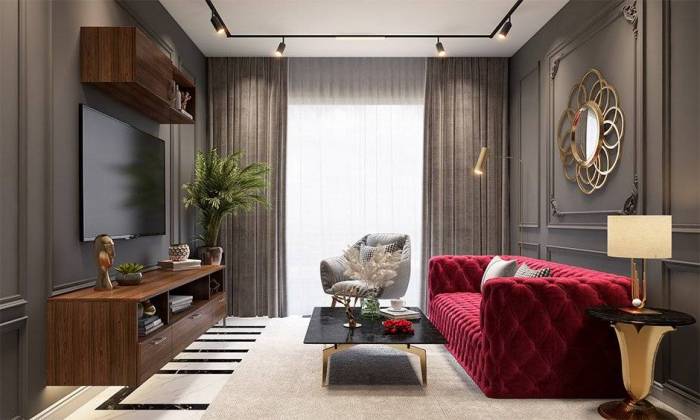
The inherent beauty and durability of natural stone make it a versatile material seamlessly integrating into diverse interior design styles. Its inherent properties, from the cool smoothness of marble to the rustic warmth of limestone, influence the overall aesthetic and contribute significantly to the mood and ambiance of a space. The selection of stone directly impacts the perceived luxury and reflects the designer’s intention for the space.
Suitability of Natural Stones for Various Interior Design Styles
Natural stone’s adaptability extends across a broad spectrum of design aesthetics. Minimalist interiors, characterized by clean lines and a restrained palette, often benefit from the understated elegance of honed limestone or light-colored marble. The subtle veining of these stones adds a touch of natural complexity without overpowering the minimalist ethos. In contrast, traditional styles, which embrace ornate details and rich textures, find perfect harmony with stones like richly veined marbles (like Calacatta or Emperador) or intricately patterned travertine.
These stones provide a luxurious backdrop for antique furniture and elaborate moldings. Modern design, with its emphasis on geometric shapes and sleek surfaces, is well-served by the polished sophistication of granite or the contemporary appeal of quartzite. These stones’ inherent strength and durability align with the clean lines and functional aesthetic of modern design.
Natural Stone and Color Palettes
The color palette of a room is dramatically influenced by the choice of natural stone. Cool-toned stones like white marble or light grey limestone create a sense of spaciousness and serenity, complementing pastel color palettes and light-colored furniture. Warmer tones, such as beige travertine or honey-colored limestone, evoke feelings of comfort and coziness, pairing well with earthy tones, rich woods, and darker furniture.
Darker stones, like black granite or deep green serpentine, add drama and sophistication, creating a striking contrast against lighter elements and serving as a powerful focal point in a room. The color of the stone can be used to either anchor the overall palette or to introduce a striking contrast, depending on the design goals.
Natural Stone and Furniture Styles
The textural and visual qualities of natural stone interact beautifully with various furniture styles. The smooth, polished surface of marble provides a luxurious contrast to the rustic charm of antique wooden furniture, creating a sophisticated blend of old and new. The rougher texture of slate or sandstone pairs well with modern, minimalist furniture, highlighting the clean lines and geometric forms.
The inherent elegance of natural stone complements both ornate, traditional furniture and sleek, contemporary pieces, providing a versatile backdrop for diverse design schemes. The careful selection of stone, considering its color, texture, and veining, is crucial in achieving a harmonious and aesthetically pleasing integration with the chosen furniture style.
Creating Unique Textures and Visual Interest with Natural Stone
Natural stone’s inherent textural diversity offers endless possibilities for creating visual interest. The polished surface of marble reflects light, creating a sense of spaciousness, while the honed finish of limestone provides a softer, more matte appearance. The rough texture of sandstone or slate adds a rustic, tactile element, inviting touch and interaction. Beyond the basic finishes, techniques like bookmatching (mirroring slabs to create a symmetrical pattern) or using different stone types in combination (e.g., marble and onyx) can add depth and complexity to a design.
Using natural stone in various forms—tiles, slabs, mosaics—further expands the potential for visual texture and pattern.
Mediterranean-Style Luxury Home Mood Board
Imagine a sun-drenched Mediterranean villa. The mood board features warm, honey-colored limestone flooring throughout the main living areas, providing a solid, inviting base. The walls are painted in a soft, sandy beige, echoing the tones of the stone. A large, rustic-style dining table made of reclaimed wood sits atop the limestone floor, creating a visual contrast that emphasizes the table’s unique character.
The kitchen backsplash is crafted from a mosaic of small, hand-cut travertine tiles in varying shades of beige and cream, adding visual texture and reflecting the light. A countertop made of honed Carrara marble, with its subtle grey veining, offers a cool contrast to the warmer tones of the limestone and travertine. Large, arched windows frame stunning views, allowing abundant natural light to illuminate the space, highlighting the warm hues of the stone and wood.
The overall effect is one of relaxed luxury, perfectly capturing the essence of Mediterranean style. The use of natural materials, such as stone and wood, creates a sense of warmth and authenticity, while the subtle color palette and careful attention to detail elevate the space to a level of refined sophistication.
Maintenance and Care of Natural Stone in Luxury Homes
The enduring beauty and elegance of natural stone in luxury homes demand a commitment to proper maintenance. Neglect can lead to irreversible damage, diminishing the value and aesthetic appeal of these prized surfaces. Understanding the specific needs of different stone types and employing appropriate cleaning and protection methods are crucial for preserving their pristine condition for years to come.
This section details the essential procedures for maintaining the luxurious appearance of natural stone surfaces.
Cleaning and Maintenance Procedures for Different Natural Stone Types
Natural stones, despite their inherent durability, exhibit varying levels of porosity and susceptibility to staining. Marble, for instance, is known for its softness and sensitivity to acidic substances, while granite, with its denser composition, offers greater resistance. Limestone, another popular choice, falls somewhere in between. Tailoring cleaning methods to the specific stone type is paramount. Marble requires gentle cleaning with pH-neutral cleaners to avoid etching.
Granite, being more resilient, can tolerate slightly stronger cleaners, but abrasive cleaners should always be avoided. Limestone, due to its moderate porosity, benefits from regular sealing to prevent staining. Regardless of the stone type, always test any cleaning product on an inconspicuous area first to ensure it doesn’t cause discoloration or damage.
Protecting Natural Stone Surfaces from Damage and Staining
Preventing damage is far more effective than remediation. For high-traffic areas, strategically placing rugs and mats can significantly reduce wear and tear. Using coasters under drinks and trivets under hot dishes prevents staining and etching. Regular sealing, especially for porous stones like limestone and travertine, creates a protective barrier against spills and stains. Sealing should be performed by a professional every few years, depending on the stone type and the level of traffic.
Promptly cleaning up spills, particularly those containing acidic substances like wine or juice, is critical in minimizing potential damage. The use of protective mats under furniture legs can also prevent scratching.
Specialized Cleaning Products for Natural Stone
The market offers a range of specialized cleaning products formulated specifically for natural stone. These products are typically pH-neutral, minimizing the risk of etching or damage. Avoid using harsh chemicals, abrasive cleaners, or acidic substances like vinegar or lemon juice, which can irreparably damage many stone types. For stubborn stains, consider consulting a professional stone restoration specialist.
They possess the expertise and specialized equipment to safely remove stains and restore the original beauty of the stone. The use of appropriate tools, such as soft cloths or microfiber mops, also contributes to preventing scratches.
Regular Maintenance Checklist for Homeowners
Regular maintenance is key to preserving the longevity and beauty of natural stone surfaces. A consistent schedule of cleaning and inspection is vital.
- Daily Cleaning: Sweep or vacuum to remove loose dirt and debris. Wipe up spills immediately.
- Weekly Cleaning: Damp mop with pH-neutral cleaner. Pay attention to grout lines.
- Monthly Cleaning: Deep clean with a specialized stone cleaner, following the manufacturer’s instructions.
- Annual Inspection: Inspect for any signs of damage, staining, or wear. Address any issues promptly.
- Periodic Sealing: Consult a professional for periodic resealing, typically every 2-5 years, depending on the stone type and usage.
Cost and Value of Natural Stone in Luxury Home Decor
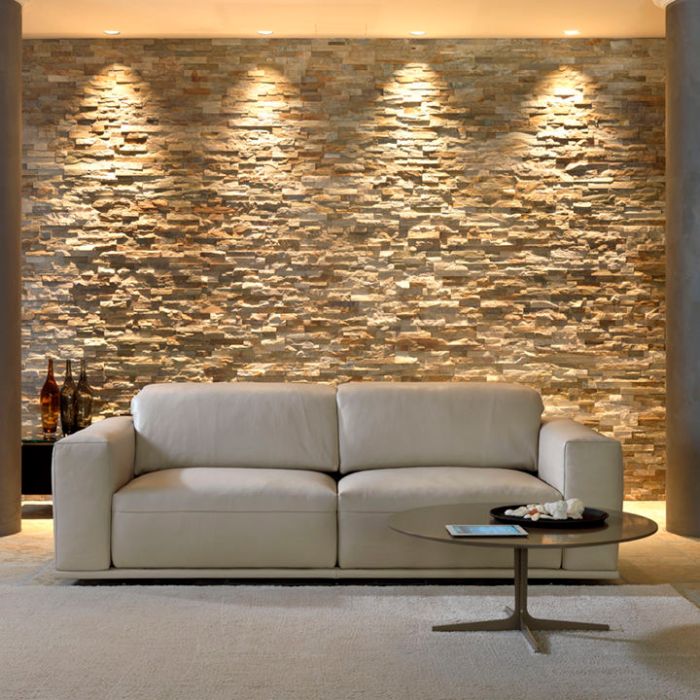
The allure of natural stone in luxury homes is undeniable, but its incorporation necessitates a careful consideration of cost and long-term value. Understanding the pricing variations between different stone types and the potential return on investment is crucial for discerning homeowners. This section explores the financial aspects of natural stone, examining its price points, appreciating its enduring value, and illustrating its impact on property resale value.
The cost of natural stone varies significantly depending on several factors, creating a wide spectrum of price points. Rarity, geological origin, and the required processing all contribute to the final cost. For instance, rarer marbles like Calacatta Gold, known for its dramatic veining, command significantly higher prices than more common options like Crema Marfil. Similarly, the complexity of the stone’s texture and the level of finishing required—be it polished, honed, or flamed—will influence the overall expense.
Import duties and transportation costs also add to the final price tag, especially for stones sourced internationally.
Comparative Costs of Different Natural Stone Types
A direct comparison of natural stone costs requires specifying factors like slab size, thickness, and finishing. However, general price ranges can be established. High-end marbles like Calacatta Gold or Statuario can cost upwards of $100 per square foot, while mid-range options such as Carrara marble or Crema Marfil might fall in the $50-$80 per square foot range. Granites, known for their durability, generally offer more affordable options, ranging from $30 to $70 per square foot, depending on the specific type and origin.
Other stones like limestone, travertine, and quartzite also exhibit a range of prices influenced by factors previously discussed. These prices represent the cost of the material itself and do not include installation costs.
Long-Term Value and Return on Investment
Despite the initial investment, natural stone offers a compelling long-term return. Its inherent durability ensures longevity, minimizing the need for frequent replacements or repairs common with other materials. Unlike trends that fade, the timeless elegance of natural stone maintains its appeal, thus preserving its value over time. Furthermore, the inherent quality and craftsmanship associated with natural stone installations contribute to increased property value, leading to a strong return on investment when the property is eventually sold.
Impact of Natural Stone on Resale Value
Numerous real estate market analyses demonstrate a positive correlation between the use of high-quality natural stone and increased property value. Luxury homes featuring exquisite marble bathrooms or stunning granite countertops often command higher prices than comparable properties with less luxurious finishes. The perceived prestige and sophistication associated with natural stone appeal to high-end buyers, resulting in a higher selling price and faster sales times.
For example, a kitchen remodel featuring a premium marble island might yield a significantly higher return on investment compared to a similar remodel using less expensive materials. The increased perceived value often surpasses the initial investment cost in the long run.
Factors Influencing Natural Stone Installation Pricing
The overall cost of a natural stone installation extends beyond the material itself. Labor costs, which vary depending on the complexity of the project, the installer’s expertise, and geographical location, play a significant role. Additional costs may include fabrication fees (cutting, shaping, and polishing the stone to fit the specific design), transportation expenses, and potential waste removal fees.
The level of detail in the design—intricate mosaics or complex edge profiles—also increases the labor and therefore the overall installation cost. Finally, the need for specialized tools or techniques for specific stone types can further influence the pricing.
Wrap-Up
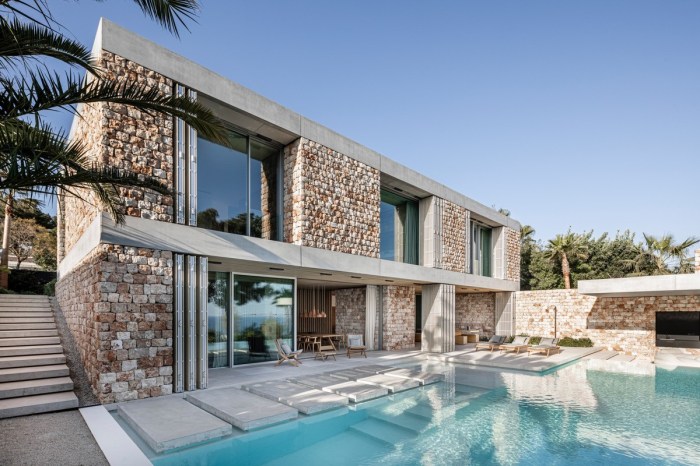
Incorporating natural stone into luxury home decor is more than just a design choice; it’s an investment in enduring beauty, sustainable practices, and lasting value. From the meticulous craftsmanship required to bring out the inherent elegance of each stone to the long-term benefits of its durability and timeless appeal, the journey through natural stone’s contribution to luxury living reveals a harmonious blend of aesthetics and practicality.
The unique character of each stone, its ethical sourcing, and its ability to enhance both the ambiance and resale value of a home solidify its position as a cornerstone of luxurious design.
Expert Answers
What are the most common problems with natural stone countertops?
Common issues include staining (especially from acidic substances), etching (dulling from acidic cleaners), chipping, and scratching. Proper sealing and maintenance are crucial to mitigate these problems.
How much does professional installation of natural stone cost?
Installation costs vary greatly depending on the type of stone, the complexity of the project, and the installer’s location and experience. Expect to pay a significant premium for complex designs or rare stone types.
Can natural stone be used outdoors?
Yes, many natural stones are suitable for outdoor applications, but the specific type chosen must be appropriate for the climate and exposure. Some stones are more resistant to weathering and temperature fluctuations than others.
How often should I seal my natural stone surfaces?
The frequency of sealing depends on the type of stone and its porosity. Some stones require resealing annually, while others may only need it every few years. Consult a professional for specific recommendations.
What are the best cleaning products for natural stone?
Avoid harsh chemicals and acidic cleaners. Mild soap and water are usually sufficient. For tougher stains, use a pH-neutral stone cleaner specifically designed for your stone type.
